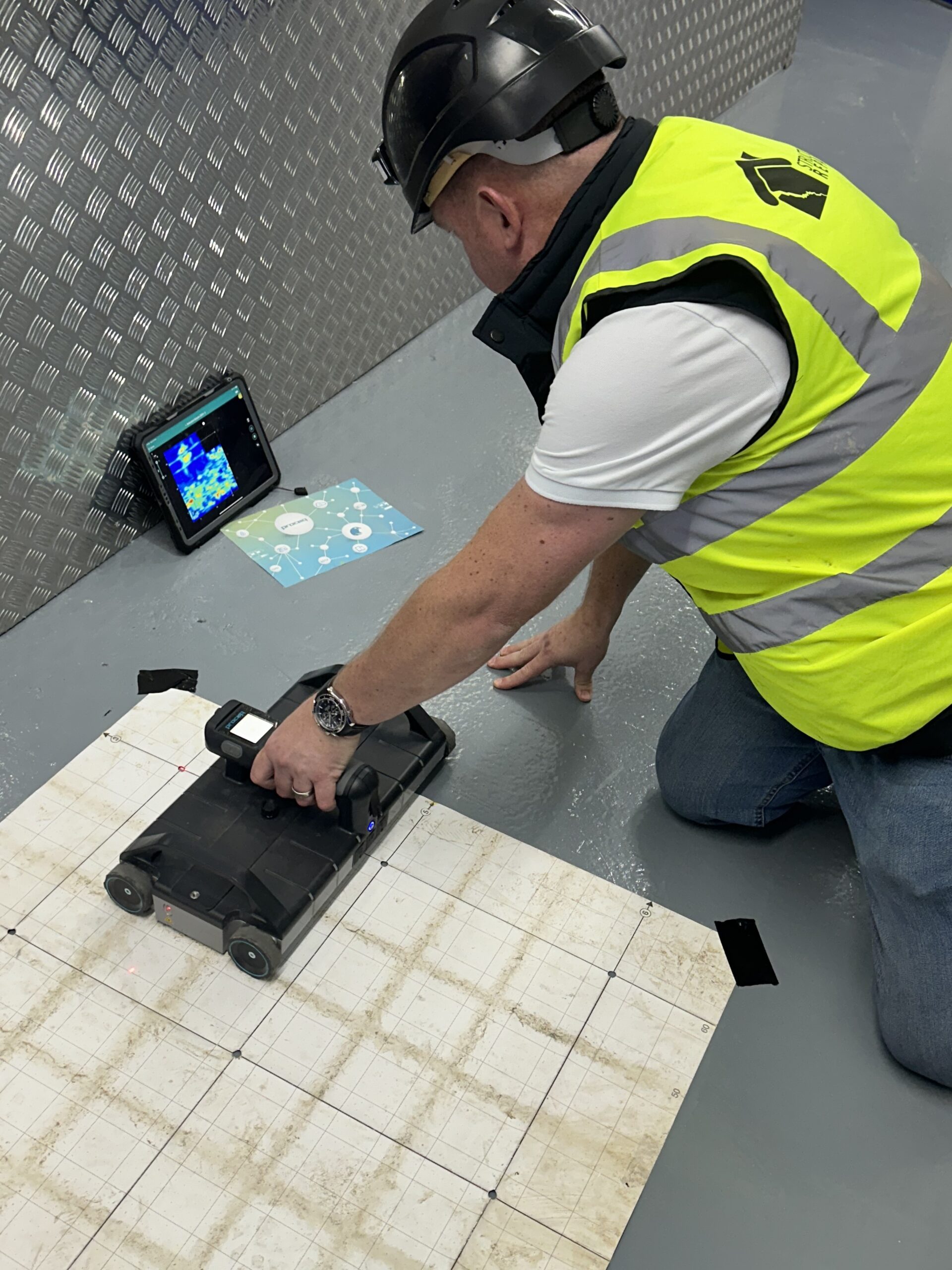The Relevance of Specific Concrete Scanning in Finding Underground Hazards
The capability to precisely find and map these below ground hazards is not simply an issue of benefit yet an important aspect of making certain the security of both building employees and the integrity of the task itself. By releasing innovative scanning innovations and methods, specialists can discover surprise threats, protect against expensive damages, and eventually lead the way for smoother and more secure construction ventures.
Advanced Scanning Technologies for Detection
Sophisticated radar systems are revolutionizing the field of underground discovery by giving exceptional accuracy and effectiveness. These sophisticated scanning modern technologies utilize ground-penetrating radar (GPR) to develop thorough images of subsurface structures, providing understandings right into what lies under the surface with impressive clarity. By discharging high-frequency pulses right into the ground and measuring the representations, radar systems can identify variants in material composition and discover below ground risks such as gaps, cables, and pipelines.
Among the vital benefits of these innovative radar systems is their non-invasive nature, permitting complete inspections without creating damages to the existing structures. This not just guarantees the safety of the surrounding atmosphere however additionally lessens the requirement for expensive fixings or disturbances to continuous construction jobs. Furthermore, the real-time data supplied by these scanning technologies allows fast decision-making and enhances overall task efficiency.
Significance of Subsurface Mapping

Accurate subsurface mapping aids in avoiding expensive problems to existing below ground facilities, lowering the risk of crashes, and preserving project timelines. It makes it possible for task managers to make educated choices relating to site preparation, devices release, and resource appropriation. In addition, subsurface mapping allows for much better control amongst different groups working on a task and assists in abiding by regulatory demands related to below ground energy discovery.
Mitigating Dangers in Building And Construction Jobs
Efficient threat reduction techniques are essential for making sure the success and security of building jobs. One key element of mitigating dangers in construction projects is thorough preparation and assessment at the first stages.
In addition, establishing clear interaction networks among all job stakeholders and making certain strict adherence to safety and security procedures are crucial elements of threat reduction. By proactively carrying out durable danger reduction approaches, building and construction tasks can decrease hold-ups, price overruns, and safety and security cases, eventually leading to successful task end results.

Avoiding Pricey Problems and Delays
To reduce economic losses and project obstacles, efficient approaches need to be executed to avoid costly damages and hold-ups in building and construction projects. One important method to accomplish this is by performing extensive concrete scanning before any type of excavation job begins. By using innovative scanning modern technologies such as ground-penetrating radar (GPR) and electro-magnetic induction, construction teams can properly identify underground risks like rebar, channels, and various other energies. Identifying these blockages early assists in preparing the task design extra successfully and staying clear of potential problems throughout excavation.
Furthermore, buying training programs for construction workers on the importance of concrete scanning and safe excavation techniques can significantly minimize the danger of accidents and hold-ups. Clear interaction channels between job supervisors, designers, and on-site workers are additionally necessary to guarantee that everyone knows the possible risks and adheres to the essential procedures to avoid expensive damages. By prioritizing proactive steps like concrete scanning and advertising a society of safety and security and understanding, building and construction jobs can decrease the monetary impact of unanticipated below ground why not look here obstructions and avoid costly hold-ups.
Ensuring Safety of On-Site Worker
By prioritizing aggressive actions such as thorough training programs and clear interaction channels, construction tasks can make sure the safety of on-site workers amidst the potential threats identified through concrete scanning. Appropriate training outfits workers with the expertise and abilities needed to browse construction websites safely, specifically when hazards are recognized through scanning processes. Training needs to cover hazard acknowledgment, emergency situation procedures, and the appropriate use of personal protective tools to mitigate risks effectively.
Furthermore, establishing clear interaction channels is critical for disseminating information about identified hazards immediately. This makes sure that all on-site personnel recognize potential threats and can take required safety measures to visit homepage avoid crashes. Normal security briefings, toolbox talks, and consistent updates relating to scanning results assistance maintain every person informed and positive in preserving a risk-free workplace.
Moreover, executing stringent adherence to security protocols and laws, conducting regular security audits, and promoting a culture of security consciousness among employees are important components in guaranteeing the well-being of on-site workers throughout construction jobs - RainierGPR Concrete Scanning. Aggressive precaution not just protect workers from injury but also add to the general success and performance of the project
Verdict
Using advanced scanning innovations and subsurface mapping assists reduce risks in building and construction projects, preventing pricey problems and delays. It is important for construction business to prioritize the use web link of specific scanning methods to reduce potential dangers and make certain a smooth construction process.

By proactively implementing durable danger reduction strategies, construction projects can lessen hold-ups, expense overruns, and security incidents, inevitably leading to effective job outcomes. - RainierGPR Concrete Scanning
To reduce financial losses and job setbacks, reliable methods need to be applied to protect against pricey problems and hold-ups in building and construction projects. By focusing on aggressive procedures like concrete scanning and promoting a society of safety and security and recognition, construction tasks can decrease the monetary impact of unexpected underground blockages and prevent expensive hold-ups.
By focusing on proactive measures such as thorough training programs and clear interaction networks, construction projects can make sure the safety and security of on-site workers in the middle of the prospective hazards identified with concrete scanning. Using sophisticated scanning technologies and subsurface mapping aids mitigate threats in building tasks, stopping expensive problems and delays.